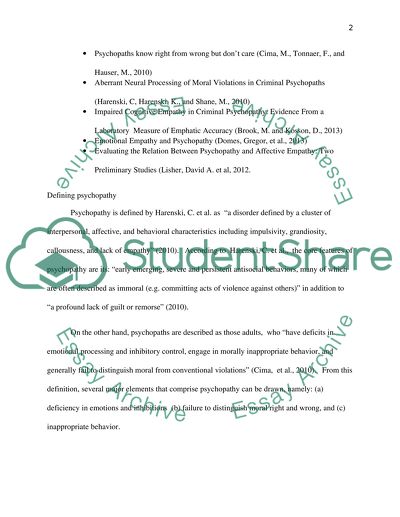Cite this document
(“Empathy and Moral Deficiency in Psychopaths Research Paper”, n.d.)
Empathy and Moral Deficiency in Psychopaths Research Paper. Retrieved from https://studentshare.org/psychology/1476814-empathy-and-morality-deficiency-in-psychopaths
Empathy and Moral Deficiency in Psychopaths Research Paper. Retrieved from https://studentshare.org/psychology/1476814-empathy-and-morality-deficiency-in-psychopaths
(Empathy and Moral Deficiency in Psychopaths Research Paper)
Empathy and Moral Deficiency in Psychopaths Research Paper. https://studentshare.org/psychology/1476814-empathy-and-morality-deficiency-in-psychopaths.
Empathy and Moral Deficiency in Psychopaths Research Paper. https://studentshare.org/psychology/1476814-empathy-and-morality-deficiency-in-psychopaths.
“Empathy and Moral Deficiency in Psychopaths Research Paper”, n.d. https://studentshare.org/psychology/1476814-empathy-and-morality-deficiency-in-psychopaths.


